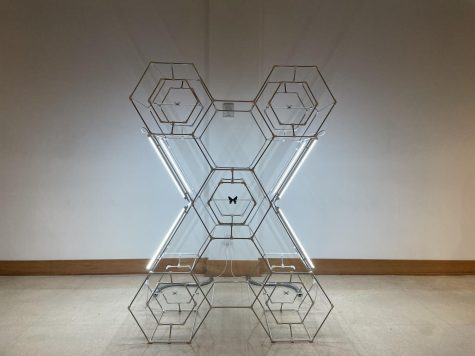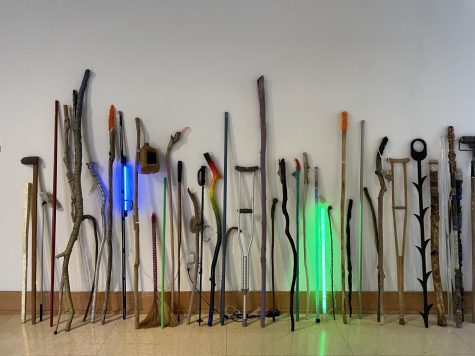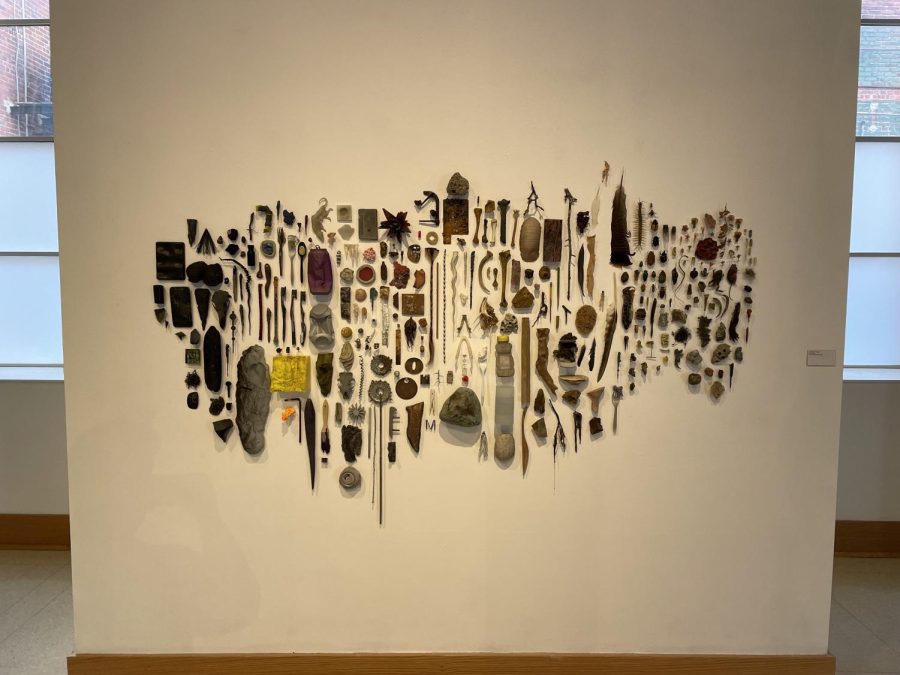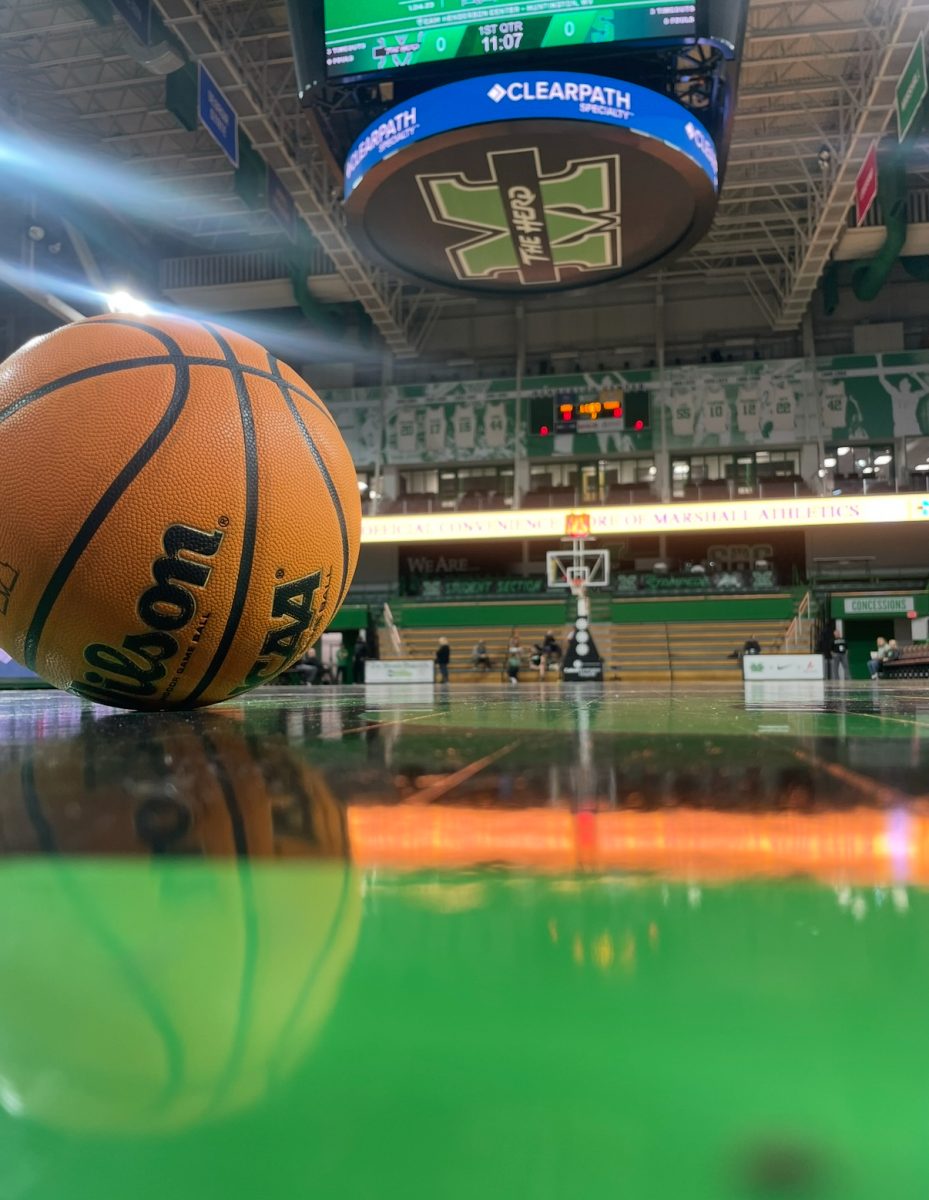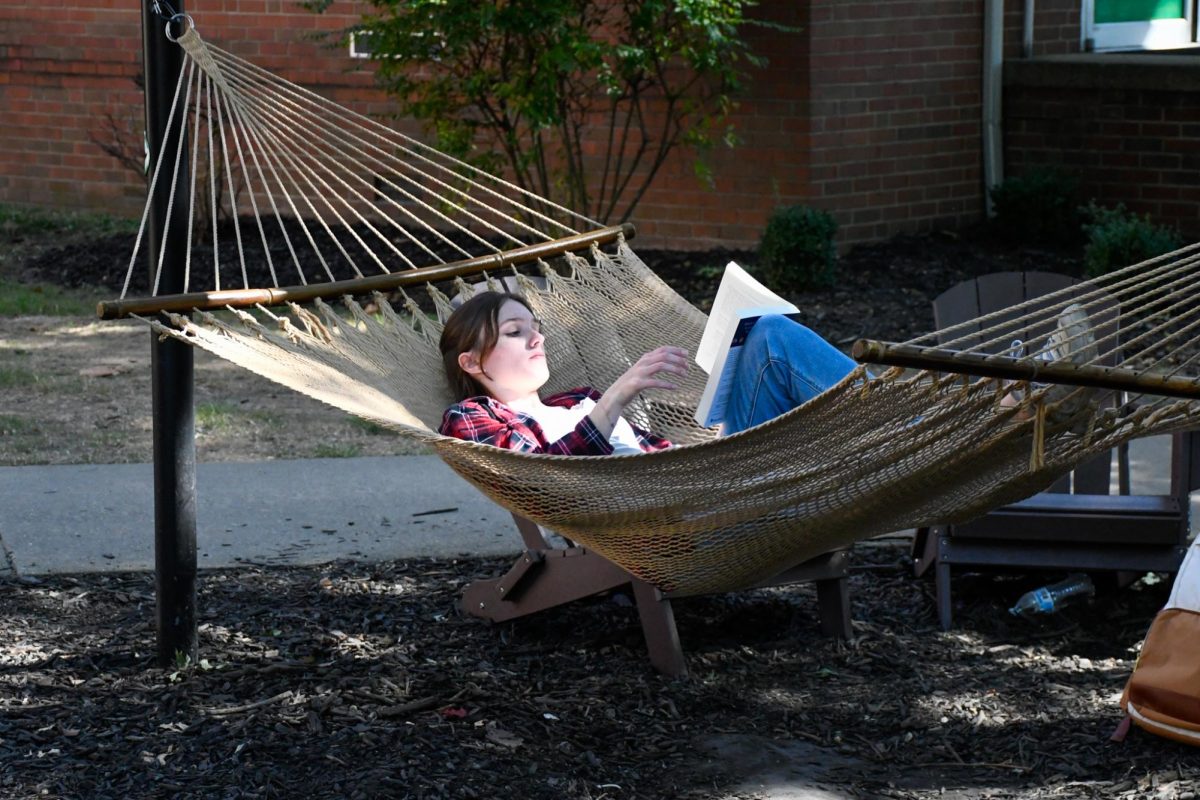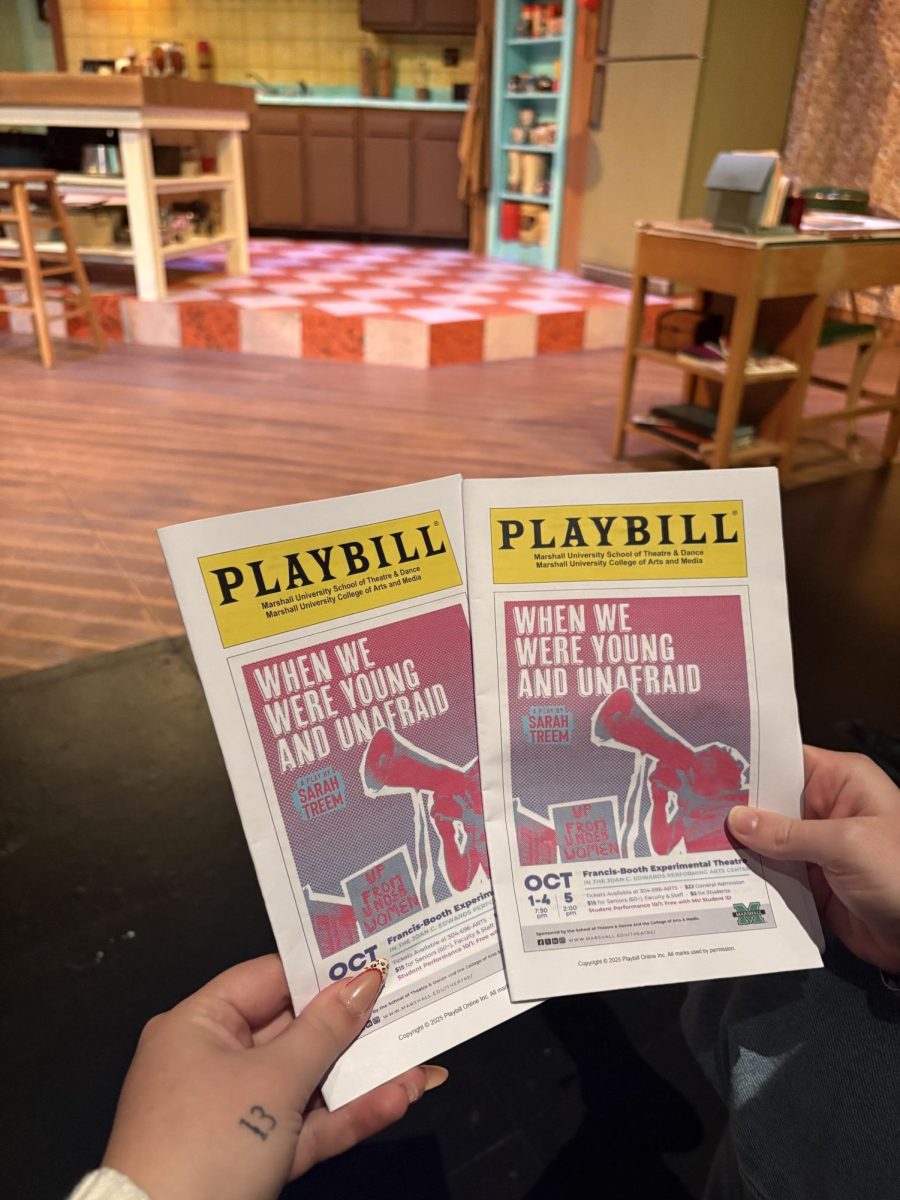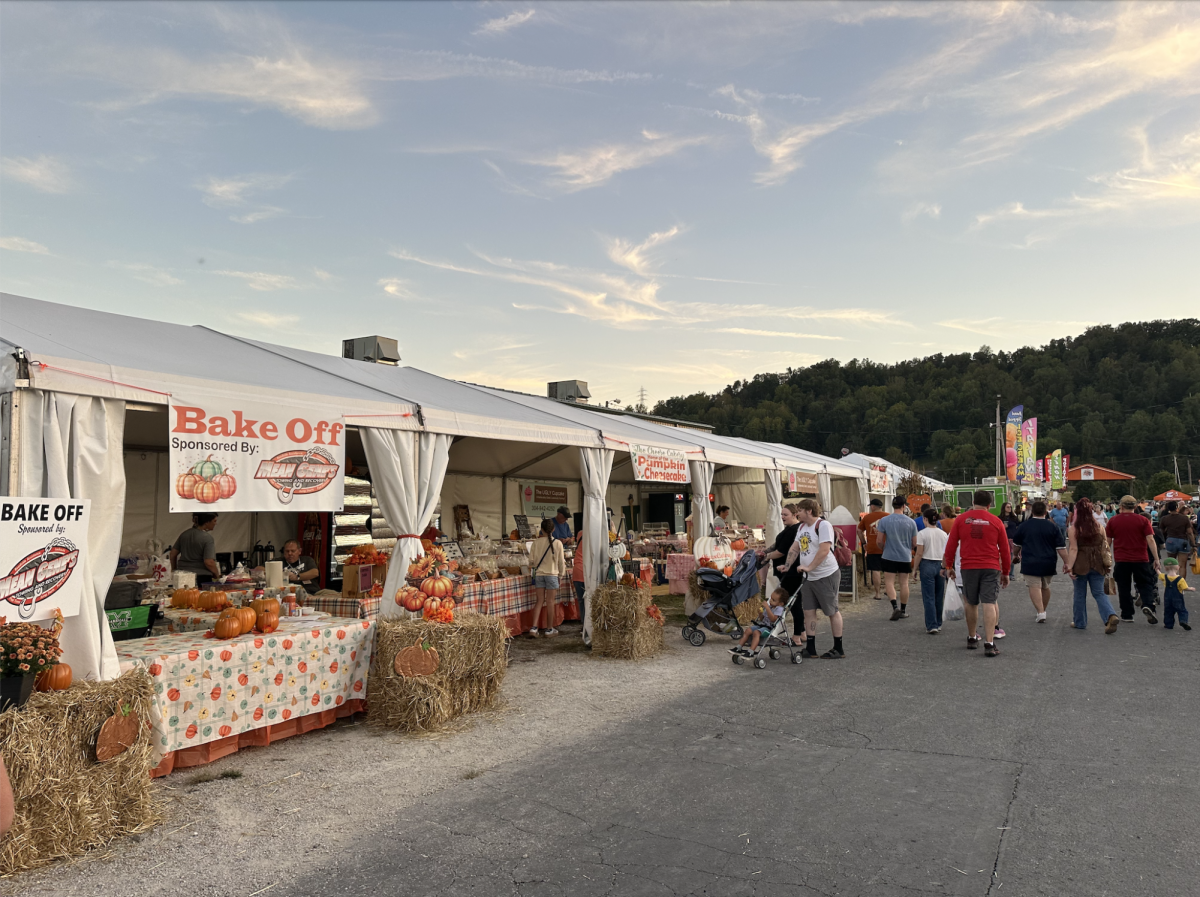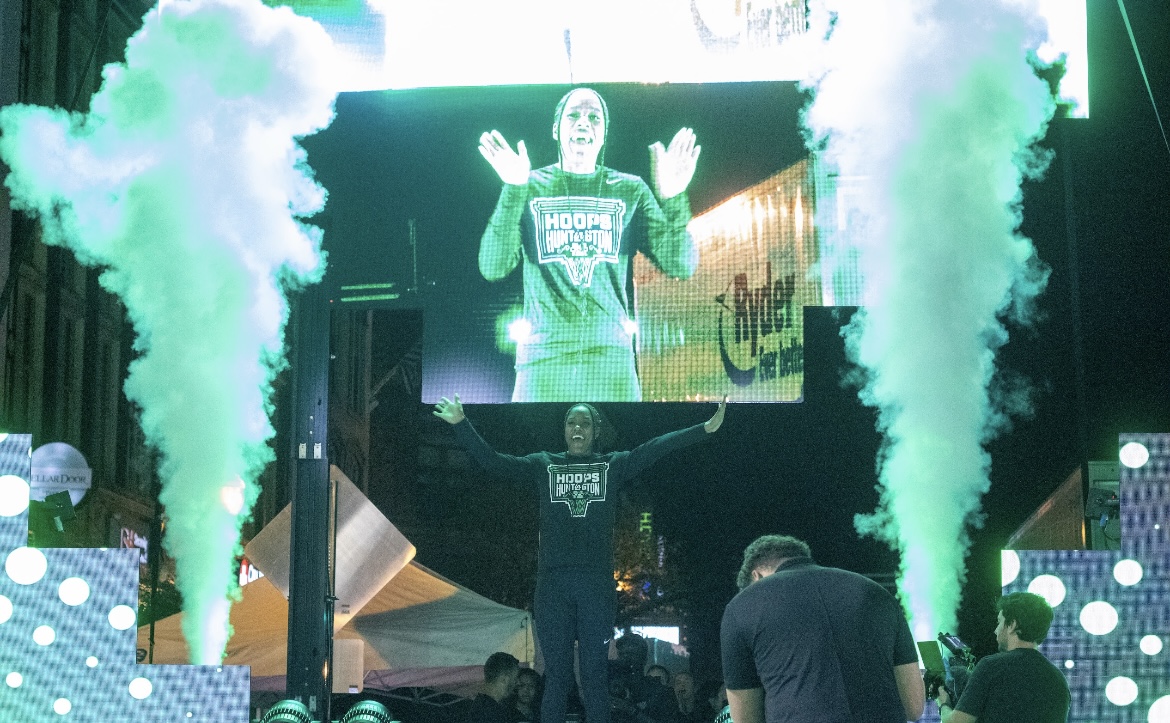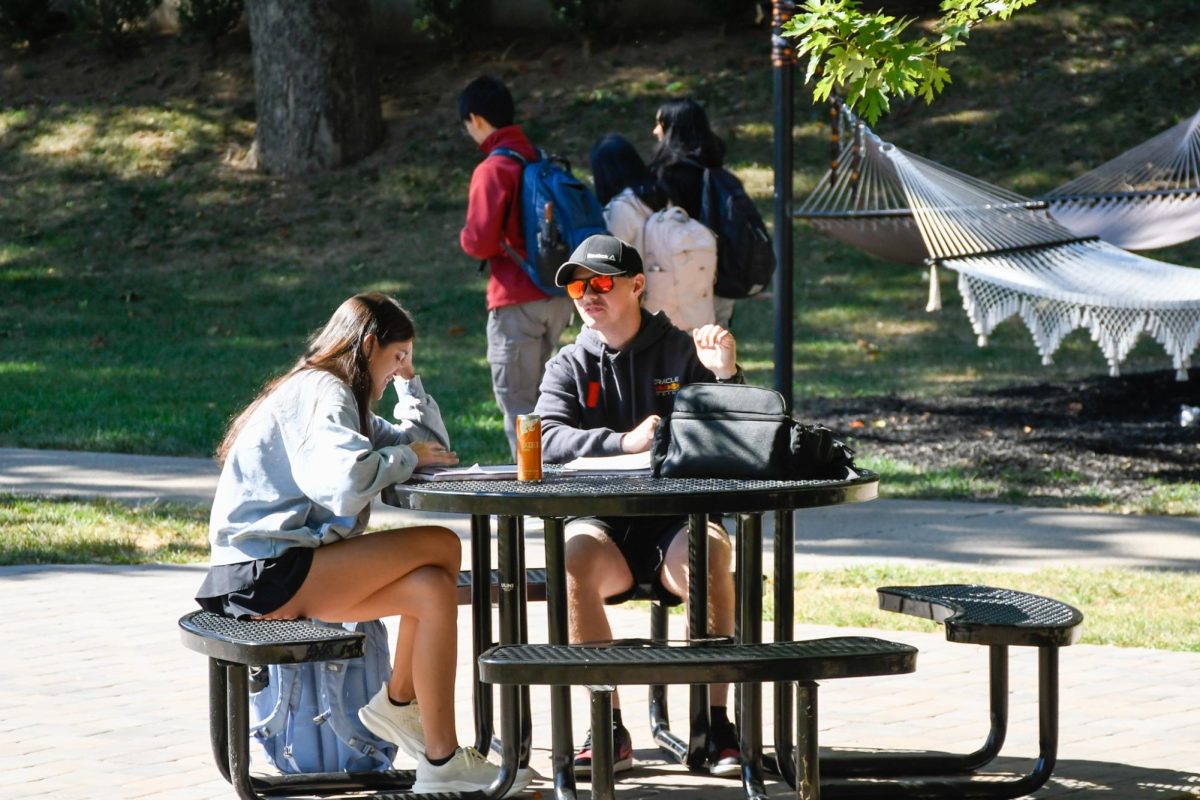Voyage of Life Art Exhibit Features Innovative Pieces
February 12, 2023
Walking sticks and digital fabrication art pieces were the topic of discussion at The Voyage of Life sculptural art exhibit on Feb. 9 at the Marshall University Visual Arts Center.
Eli Kessler and Christopher Mahonski were the featured artists of the talk and whose works combined to make the exhibit.
“The installation includes a series of sculptures that focus on the tension between ecological and socio-cultural developments throughout time,” Kessler said. “When combined, the works examine existence within a world of hyper-digital industrialization and ecological uncertainty by incorporating subject matter and materials from a timespan predating humanity to contemporary.”
The duo has been working together for twenty years since their meeting in Philadelphia on various art projects over that time, Kessler said.
Inspiration for art pieces varies amongst artists. “I use types of ichnographies from around 100 years ago to gain an understanding of cultures before my life but also types that have been used during my lifetime as well,” Kessler said.
This inspiration can be seen in his piece “The Thorn,” where he used an American folklore technique called crown of thorns, which is from the early 1900s where cigar boxes would be cut into intricate pieces and puzzled together, Kessler said.
Much of history in some way involves handheld objects such as weapons or daily use items such as brooms and nets. These items are all tied into Mahonski’s piece “Drifter History.”
“I drew some inspiration for some of the pieces in the ‘Drifter History’ work from our history with walking sticks, weapons and some LARPing things I had seen from people LARPing at parks and things like that,” Mahonski said.
Much of Mahonski’s works were inspired by his geology background and his love for collecting.
“These works are still kind of ongoing because a lot of it revolves around me collecting and my love for fossils,” Mahonski said. “Which stems from growing up in Pennsylvania where I always looked for fossils as a kid.”
Fossils and other things Mahonski found interesting are pieced together to form “Some Things,” which was also on display in the exhibit.
Both Mahonski’s and Kessler’s works portrayed many aspects of how art ties into the lives of Americans.
